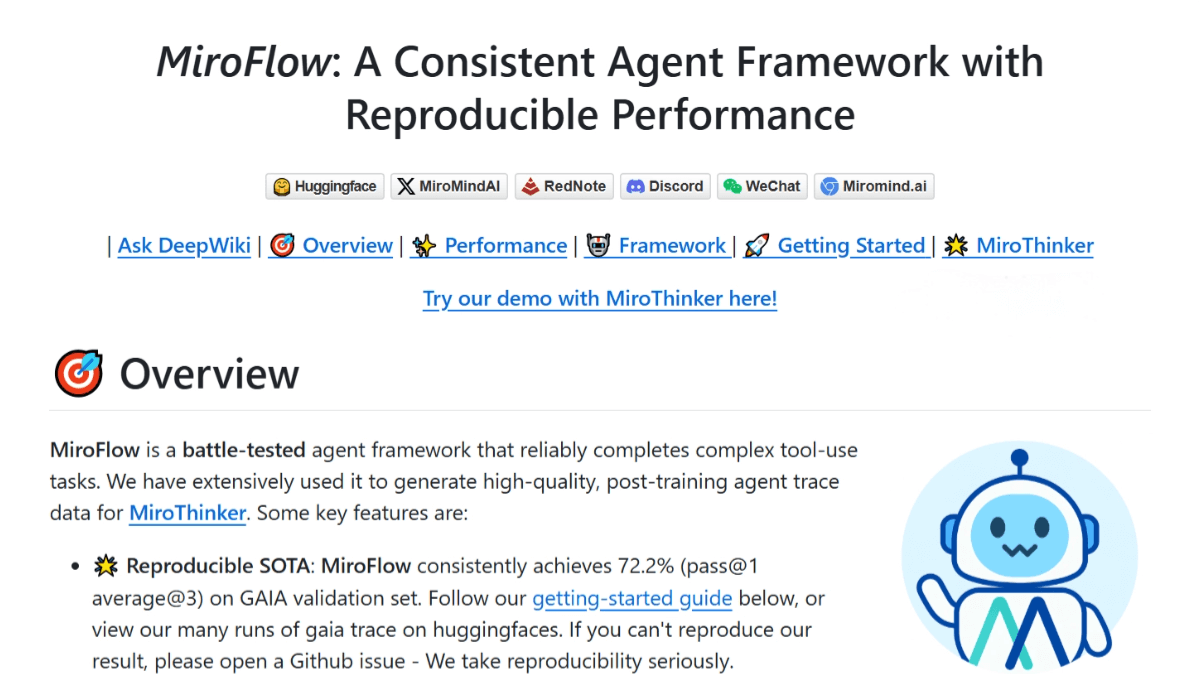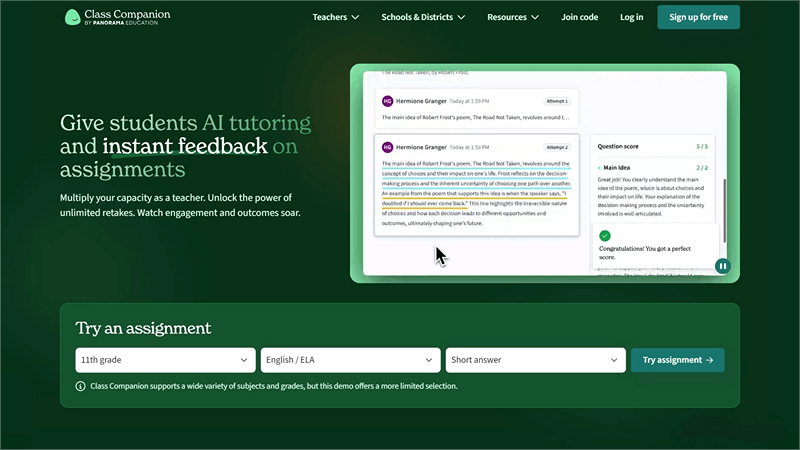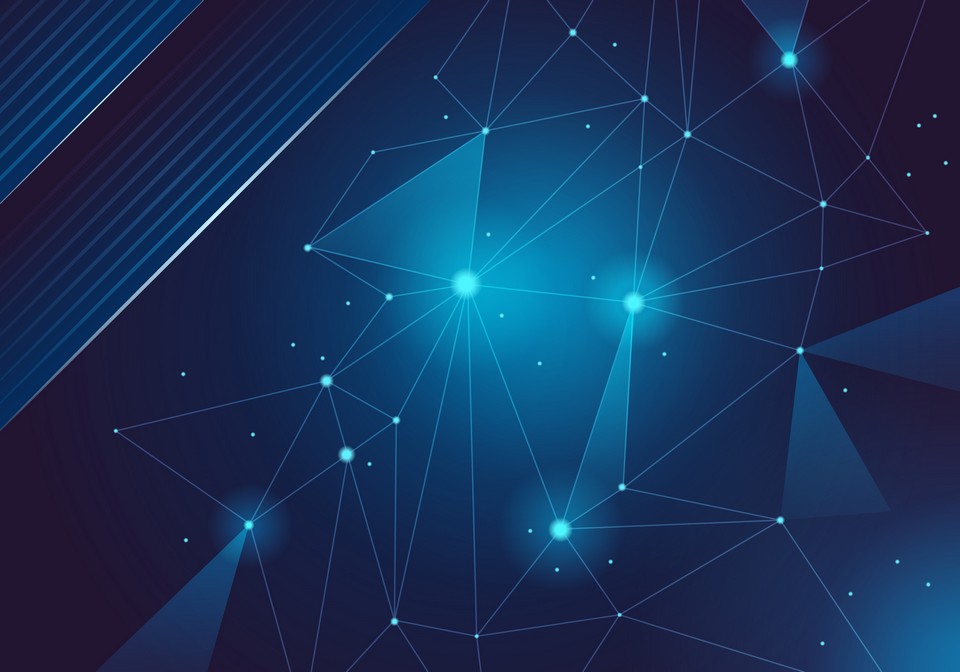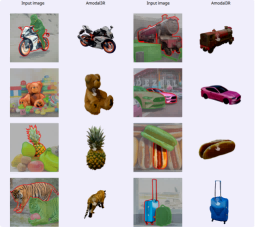MiroFlow – A multi-agent system development framework with support for high-concurrency processing
What is MiroFlow?
MiroFlow is a powerful multi-agent system development framework designed for building complex, high-performance AI agents, and for generating high-quality agent trajectory data for models such as MiroThinker. The framework delivers reproducible performance, achieving a stable 72.2% pass rate on the GAIA validation set. It supports high concurrency and fault tolerance, with built-in observability and evaluation tools to facilitate debugging and optimization.
With a modular design, MiroFlow supports multi-turn conversations, rich tool integrations, and a hierarchical sub-agent architecture to handle complex tasks flexibly. It offers a detailed configuration system, task logging, and output formatting capabilities, enabling developers to quickly get started and extend functionality.

Key Features of MiroFlow
-
Reproducible High Performance: Achieves a stable 72.2% pass rate on the GAIA validation set, with complete scripts and configuration files to ensure reproducible results.
-
High Concurrency & Fault Tolerance: Efficient concurrent processing with robust fault tolerance to handle rate-limited APIs and unstable networks.
-
Built-in Observability & Evaluation Tools: Comes with benchmark scripts and a web interface for visualizing and debugging agent trajectories, alongside a comprehensive logging system.
-
Modular Design: Supports flexible handling of complex tasks through multi-turn conversations, tool integration, and a layered sub-agent architecture.
-
Flexible Tool Integration: Connects to various tools via an MCP server, supporting code execution, visual perception, web search, and compatibility with multiple LLM providers.
-
Configuration & Extensibility: Uses the Hydra configuration management system with structured YAML files, and an output formatting system adaptable to different benchmark requirements.
Technical Principles
-
Multi-Stage Workflow: User input is processed by an LLM for intent recognition and query enhancement. The main agent creates an execution plan based on the enhanced query and coordinates the workflow, including calling tools and delegating subtasks to sub-agents. Sub-agents plan and execute tool calls independently, then return results to the main agent, which consolidates them into outputs matching user instructions or benchmark formats.
-
Modular Architecture: Core components include the Pipeline (task execution coordinator), Orchestrator (dialogue flow manager), and LLM Client (LLM interface). The Tool Manager connects to and manages MCP servers, handling tool discovery, error management, and blacklisting. Sub-agents focus on domain-specific tasks (e.g., web browsing, code execution), each with its own toolset and custom prompts.
-
LLM & Tool Integration: Task planning and dialogue management are driven by LLMs, while tools provided via the MCP server execute specific tasks. The MCP server, built on FastMCP, supports tools such as code execution, visual perception, and web search.
-
High Concurrency & Fault Tolerance: Uses asynchronous processing and queue management for concurrent task handling. Built-in fault tolerance addresses API rate limits and unstable network conditions to ensure task continuity.
-
Observability & Logging: A web interface visualizes agent execution traces, and the logging system records interactions, tool executions, performance metrics, and error details for easier debugging and optimization.
Project Link
-
GitHub Repository: https://github.com/MiroMindAI/Miroflow
Use Cases
-
Complex Task Automation: Handles multi-step, multi-tool workflows such as automated data processing and analysis to improve enterprise efficiency.
-
Intelligent Customer Support: Powers customer service systems to answer queries, process order requests, and handle complex tasks, enhancing the customer experience.
-
Education & Learning Assistance: Provides personalized learning paths and homework guidance, delivering tailored answers based on student progress to support intelligent education.
-
Code Generation & Debugging: Assists software development by generating code snippets and debugging issues automatically, improving efficiency and reducing manual intervention.
-
Multimodal Content Creation: Generates content combining text, images, and audio, increasing diversity and appeal in creative outputs.
Related Posts




